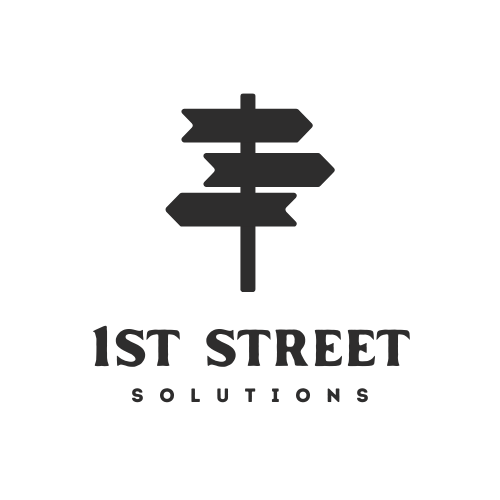In today’s fast-paced digital landscape, businesses must choose the right strategies to fuel their growth and maximize returns. Two of the most popular marketing strategies that have emerged are Growth Marketing and Performance Marketing. Both approaches are essential, but the key to long-term success lies in finding the right balance between them. In this article, we will explore the differences between Growth Marketing and Performance Marketing and how to use them in tandem to drive your brand forward.
Understanding Growth Marketing vs. Performance Marketing
What is Growth Marketing?
Growth marketing is a strategic approach that focuses on the long-term, sustainable growth of a brand. It encompasses a variety of tactics aimed at acquiring new customers, retaining existing ones, and driving overall business expansion. The key to growth marketing is experimentation and the continuous optimization of marketing campaigns, data-driven decision-making, and personalized customer experiences.
Growth marketing isn’t just about running ads or sending out emails; it’s about building lasting relationships with customers and understanding their needs. Successful growth marketers use data to refine strategies, target the right audience, and ensure that the marketing message resonates with customers at every touchpoint.
Key Aspects of Growth Marketing:
- Customer Retention: Growth marketing heavily focuses on keeping customers engaged and loyal to the brand.
- Data-Driven Decisions: Growth marketers rely on data to optimize campaigns and improve customer experiences.
- Experimentation: Constant A/B testing, iteration, and optimization of marketing strategies are common practices.
- Multi-Channel Approach: Growth marketing uses a variety of channels, from social media to email and content marketing, to ensure a holistic approach.
What is Performance Marketing?
Performance marketing, on the other hand, is a results-driven marketing approach focused on achieving specific goals within a set timeframe. The success of performance marketing is measurable, meaning brands can track their return on investment (ROI) in real-time. This strategy revolves around driving immediate and tangible results, such as leads, conversions, and sales.
Performance marketing often includes tactics like pay-per-click (PPC) advertising, affiliate marketing, display ads, and retargeting. These tactics are designed to generate quick results by targeting users who are ready to take action. The goal of performance marketing is to generate as much ROI as possible for the marketing budget spent.
Key Aspects of Performance Marketing:
- ROI Measurement: Performance marketing focuses on tracking and optimizing ROI based on measurable outcomes.
- Immediate Results: This strategy is best for businesses that need quick, measurable results, such as lead generation or direct sales.
- Paid Media: Performance marketing relies heavily on paid advertising campaigns, including PPC, social media ads, and display ads.
- Targeted Campaigns: Performance marketers use audience segmentation to ensure that their ads are shown to users who are most likely to convert.
Growth Marketing vs. Performance Marketing: The Key Differences
Focus and Goal
While both strategies are important, the key difference lies in their focus. Growth marketing is about building a sustainable growth trajectory for the brand, while performance marketing is about generating immediate, measurable results. Growth marketing typically requires a longer-term commitment, while performance marketing produces quicker wins.
Growth Marketing focuses on:
- Retaining customers
- Developing a long-term brand strategy
- Building brand loyalty
- Expanding customer lifetime value (CLV)
Performance Marketing focuses on:
- Achieving immediate sales or leads
- Driving direct actions (clicks, conversions, etc.)
- Maximizing short-term ROI
- Measuring performance on a granular level
Strategy and Tactics
Growth marketers often employ a variety of strategies, including content marketing, email campaigns, and social media engagement, which are designed to build relationships and retain customers. They focus on creating a seamless user experience and using data to refine strategies over time.
In contrast, performance marketers typically focus on direct-response tactics. Their goal is to generate clicks, sales, or leads through paid channels such as Google Ads, Facebook Ads, or affiliate marketing programs. These campaigns are highly optimized for performance and can be adjusted quickly to maximize returns.
Measurement and ROI
Growth marketing success is measured in terms of long-term success indicators, such as customer retention rates, brand awareness, and lifetime value. Performance marketing, however, is more focused on immediate returns and is often measured using key performance indicators (KPIs) such as cost per click (CPC), cost per acquisition (CPA), and return on ad spend (ROAS).
Cost
Growth marketing typically involves more organic strategies, which can be more cost-effective over time. However, the results may take longer to materialize. Performance marketing, on the other hand, involves paid advertising, which can require a significant budget. However, the upside is that it can generate faster and more tangible results.
Finding the Right Balance Between Growth Marketing and Performance Marketing for Your Brand
To succeed in today’s competitive marketplace, it is essential for brands to strike the right balance between Growth Marketing and Performance Marketing. Here’s how you can combine both strategies to maximize your marketing efforts:
1. Use Performance Marketing for Immediate Gains
Performance marketing is ideal for businesses looking for quick results. For instance, if you’re running a product launch or seasonal campaign, performance marketing allows you to drive traffic and sales quickly. You can use paid advertising on Google, Facebook, or other platforms to target potential customers with high purchase intent.
2. Incorporate Growth Marketing for Long-Term Success
While performance marketing generates short-term results, growth marketing ensures long-term brand growth. For instance, after your performance marketing campaigns drive traffic, use growth marketing tactics like email nurturing and content marketing to build lasting relationships with customers. This helps improve retention rates and drives repeat business.
3. Leverage Data to Optimize Both Strategies
Data is the backbone of both growth marketing and performance marketing. By analyzing customer behavior, you can make informed decisions on which strategy to focus on at any given time. For example, performance marketing can help you identify high-converting customer segments, which you can then target through growth marketing campaigns. Similarly, data from growth marketing can guide your performance marketing efforts.
4. Allocate Your Marketing Budget Wisely
It’s essential to allocate your marketing budget between growth marketing and performance marketing effectively. While performance marketing may require a larger budget upfront for paid campaigns, growth marketing may be more cost-effective in the long run. Assess your business needs and marketing goals to determine the appropriate balance.
5. Test, Measure, and Iterate
Both growth marketing and performance marketing thrive on constant testing and iteration. Use A/B testing to refine your ads, landing pages, and email campaigns. By measuring the results of both strategies, you can continuously optimize your marketing efforts to get the best possible outcomes.
Conclusion: Which Strategy Is Right for You?
Ultimately, Growth Marketing vs. Performance Marketing is not an either/or decision. Both strategies are crucial for the success of modern businesses. Performance marketing can help you drive quick results, while growth marketing ensures that your brand remains strong and resilient over the long term.
By combining both strategies and using data to guide your decisions, you can create a balanced marketing plan that helps you achieve both immediate wins and long-term growth. Whether you’re a startup or an established brand, finding the right balance between growth marketing and performance marketing will allow you to scale effectively and sustainably.
At itechsole, we specialize in leveraging the power of both Growth Marketing vs. Performance Marketing to deliver results that matter. Let us help you find the perfect marketing mix for your brand, so you can grow and thrive in today’s competitive digital landscape.



